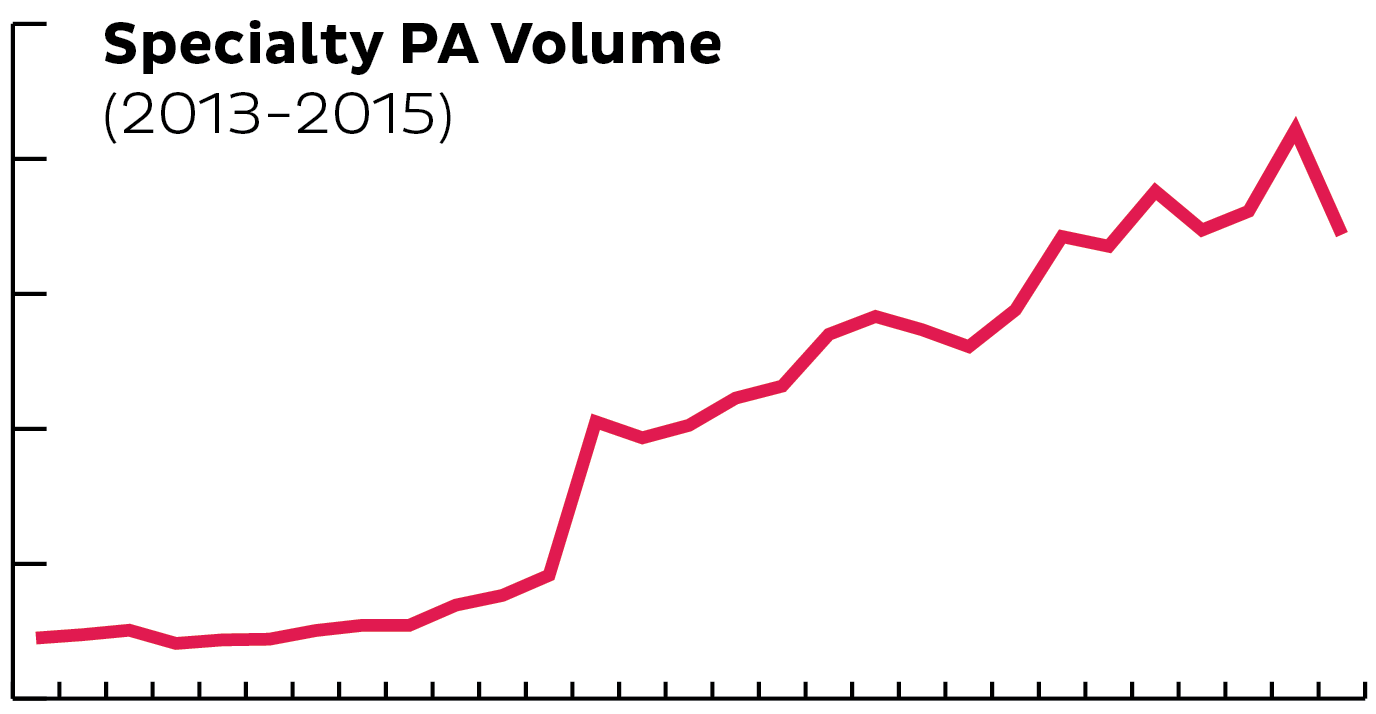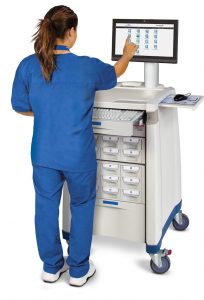We have a few big readers in the office who have all mentioned how summer is their time to catch up on reading materials. Even more true for instructors, there is no better time to sit down with a book than a long summer evening.
Five Summer Reads for Nursing Instructors and Students
Jul 25, 2016 3:54:00 PM / by user posted in nursing, Nursing Students
A better solution to Prior Authorization with medications
Jul 20, 2016 12:08:00 PM / by user posted in Nurse Practitioner, nursing, guest post, medication administration
Nurses: With Specialty Meds on the Rise, You Need a Better PA Solution
Specialty medications often manage chronic disorders (multiple sclerosis, hepatitis C and immune deficiencies are a few examples), and can require special administration (i.e., through injectable or intravenous (IV) infusion).
So is PA required for all specialty medications?
While there are always exceptions, specialty medications likely require a PA request. With a significant increase in specialty meds, we’ve seen a direct correlation to PA requests spiking as well. As new medication continues to develop, this will be something that continues to trend upward.
What takes the PA process so long, anyway?
First, let’s review a quick definition:
- Prior Authorization: The patient’s prescription coverage plan needs extra information about why your patient needs the prescribed medication in order to determine benefit coverage.
The PA process involves several parties (pharmacy, doctor, health plan, patient) and is often time consuming. CoverMyMeds steps in to limit the inevitable back and forth, with an electronic, streamlined solution for nurses and their staff. Instead of printing a form, manually filling it out and sending a paper copy to the plan, you can now complete all requests, from start to finish, through the CoverMyMeds web portal or directly through your electronic health record (EHR), at no cost.
Wait, so who are you again?
Our story began back in 2008 when a pharmacist and a tech guy questioned, “Why won’t the health plan just cover my meds?” Today, we are the leading electronic prior authorization (ePA) company in the nation, helping more patients receive the medications they need in order to live healthier lives. In fact, more than 600,0000 providers and staff use CoverMyMeds to manage PA requests, along with 80 percent of the pharmacy network, nationwide.
As a Provider or Medical Professional, how do I make the process easier, like you mentioned? An electronic solution, such as CoverMyMeds, is your best bet. You may already have access to manage PA requests within your EHR system. If not, it’s easy to get started with the CoverMyMeds HIPAA-compliant online portal. Simply create a free account or log in to complete your next PA request in minutes!
By completing PA requests electronically, your office will save time, reduce administrative waste and help patients get the medications originally prescribed. On average, users indicate they complete PA requests in 3-5 minutes through CoverMyMeds versus the traditional fax or phone process, which often requires 15-20 minutes. The CoverMyMeds solution works with all health plans and for any drug (retail and specialty). This is important to ensure you only need to work through one process for any scenario — even Medicare and Medicaid.
Want personal help getting started?
Live chat our PA experts or call 1-866-452-5017.
Summer is the perfect time to get CE credits!
Jul 18, 2016 2:19:00 PM / by user posted in nursing, nursing education, continuing education
With a month or less of summer left, we know many instructors fill summer with assessing new resources, planning for the coming year and attending conferences. We'd like to make another suggestion if you find yourself with a little extra time during long summer evenings: get your CE credits out of the way!
EHR Tutor now integrates with Medication Cabinets!
Jun 13, 2016 12:12:00 PM / by user posted in EHR Tutor, medication dispenser cabinet, academic EHR, medication cart
EHR Tutor's "Scenes" makes unfolding scenarios a reality for Nursing and Health simulation!
Jun 1, 2016 2:18:00 PM / by user posted in Uncategorized
EHR Tutor announced the release of a new "Scenes" feature as a way to create unfolding scenarios in simulation.
Teaching ideas for Medication Carts and Medication Dispenser Cabinets
May 25, 2016 3:13:00 PM / by user posted in medication dispenser cabinet, nursing education, omnicell, pyxis, simcabrx, simcartrx, capsa, first dose, medication administration, medication cart, simulation, teaching idea
After our last webinar on Medication Cabinets, Carts and EHRs, we realized that not only is there confusion about what each product does, but there is confusion regarding how to use any one of these products in a Nursing or Health simulation lab.
Join our Webinar: Medication Carts, Cabinets and EHRs How do they fit together and what do you need?
Free webinar, May 18th, 2016 at 3:30pm ET
Register here (registration is limited to 50 participants): http://ehrtutor.enterthemeeting.com/m/ECKBB8WY
This webinar is great for any school considering buying, using, or expanding the use of an EHR system or medication dispensing system.
F.A. Davis partners with Noggin LLC to sell EHR Tutor with its texts
Apr 18, 2016 7:00:00 AM / by user posted in EHR Tutor, electronic medical records, academic EHR, academic EMR, electronic health records, EMR, F.A. Davis
Technology in Nursing - an infographic
Mar 23, 2016 2:27:00 PM / by user posted in nursing, infographic
This is a great example why technology in the classroom is so important!
Nurses are Essential to Delivering Cost Effective Care (an infographic)
Mar 14, 2016 2:18:00 PM / by user posted in nursing, infographic
We talk a lot about how EHRs can help improve the cost effectiveness of medical treatments. But what's one of the primary ways to cut costs? Turns out it revolves around nurses.
Hiring more nurses is crucial for things such as lowering patient mortality, and reducing number of days patients spend in hospitals and other cost-related items. As you can see, hospitals with lower patient-to-nurse ratios had total of 6,239 fewer infections, with an annual cost saving of up to $68 million. You can find out more by taking a look at the full infographic here:





